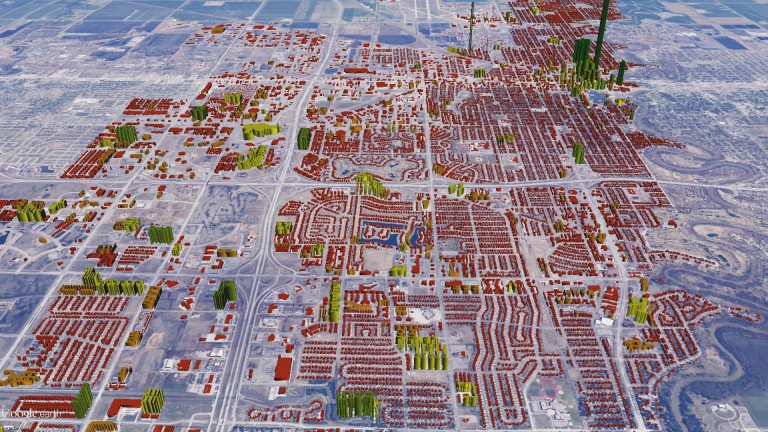DID YOU KNOW?
Downtown property values in 2003 were $210 million, and increased to $608 million in 2022.
This property value growth taxes these properties $5.7 million more than if the value stayed the same.
Properties in the Fargo School District save 3.7% because of downtown growth.
Properties currently exempt by the Renaissance Zone will push that savings to over 5% in the future as exemptions expire.
Source: City of Fargo
A century ago, cities were designed and scaled to people. Cars became priority and historic buildings were demolished in the name of urban renewal. As we lost density we also lost economic efficiency. More land to maintain creates higher costs for the city. Our goal for downtown Fargo is to create smart, mixed-use developments in areas that have become uneconomical and underutilized.
POWERFUL ECONOMICS OF MIXED-USE INFILL
Kilbourne Group’s vision of taking risk and vigorously pursuing high-quality, mixed-use infill and historic renovation projects has its roots firmly planted in the common good. Our infill approach utilizes the least amount of city infrastructure, does not require the city to take on balance sheet risk, and it raises and concentrates the tax base in a smaller geographic area in a way that creates a long term profit center in terms of taxes. All of this (lower risk, lower cost, higher returns) is good for all taxpayers.
POWERFUL ECONOMICS OF APPROPRIATE DENSITY
Kilbourne Group believes design and innovation create economic value. We believe profitable growth creates a sustainable downtown. The powerful economics of density can counteract the high cost of sprawl.
As Fargo’s population has grown, our land area has grown faster. At 49 square miles, we are larger than Boston or San Francisco. Our population density is declining as the infrastructure burden on our city and citizens grows.
The number one cost determinant in running a city is linear square feet. How wide is the city? When building new infrastructure on the edge, it’s important to remember that we take on the responsibility to maintain it in perpetuity. Road expenses are shouldered by all taxpayers.
“The cheapest road, a two-lane asphalt road, costs an average of $2.3 million a mile and underground pipes cost $1.8 million a mile, not including rebuilding the road on top…”
“Given the current trajectory … in 15 years, the area roughly between 76th and 88th would be 60 percent developed and the area between 88th and 100th would be 10 percent developed. Currently, those areas are less than 5 percent developed. The cost of streets to serve the new growth is estimated at nearly $260 million with Fargo bearing most of the brunt.”
How far south should Fargo grow? Costs may require limits
The Forum of Fargo-Moorhead, October 27, 2015
As of 2019, The City of Fargo plows over 2,000 lane miles of road.
If you believe in small government, believe in a small footprint.
If you believe in energy efficiency and sustainability, believe in a small footprint.
MAKING THE MOST OF EACH ACRE

Properties with higher utilization per acre generate the highest taxes. The tallest green peak is downtown’s Radisson. This illustration is derived from 2014 Cass County Assessment information and GIS data. It does not reflect sales tax generation, nor does it account for city infrastructure and services costs. Strong Towns, a non-profit think tank advocating for financially resilient cities, towns and neighborhoods, ran an analysis that incorporated all revenue and expenses throughout the city of Lafayette, Louisiana. See the results of the analysis.
Kilbourne Group focuses our redevelopment work in the one square mile of Fargo we believe can make the biggest impact. Downtown Fargo is the economic engine of our city.
It turns out that by building the most efficient city, we build healthier cities. This means more walking and less driving, which is better for the environment and for everyone’s pocket books.
And when we build walkable neighborhoods, we create vibrant places that help communities attract and retain the workforce we need to grow.